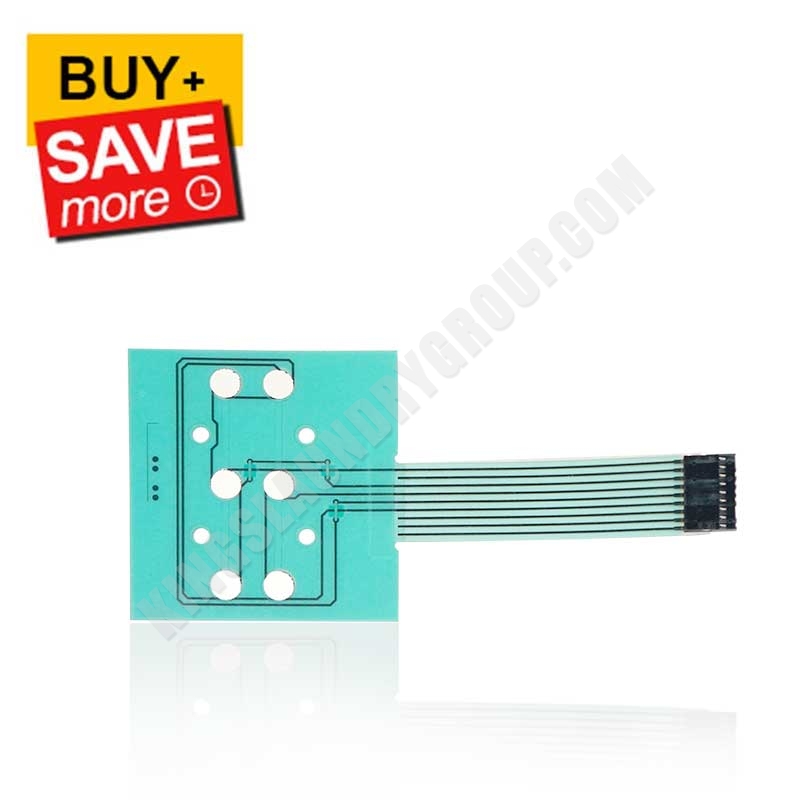Recognizing the Capability of Membrane Layer Changes for Interface Devices
The performance of membrane layer changes represents a significant improvement in interface style, integrating performance with visual flexibility. These buttons run with a multi-layered framework that converts user interactions right into electric signals, enabling both small formats and resilience versus ecological variables. As industries progressively focus on user experience, comprehending the subtleties of membrane layer button innovation becomes crucial. What ramifications do these improvements hold for future applications, and exactly how might they redefine individual communications throughout various gadgets?
What Are Membrane Layer Switches?
Membrane switches are ingenious user interface tools that help with individual interaction with electronic devices. These flexible parts contain multiple layers, consisting of a graphic overlay, spacer, and a printed circuit layer. The style permits a smooth assimilation right into numerous digital tools, enhancing both the aesthetic and functional aspects of interface.
Membrane switches are typically utilized in a large array of applications, from house appliances to industrial machinery and medical devices. Their construction normally includes a slim account, making them an ideal selection for compact designs. The tactile feedback provided by these switches can be crafted to fulfill particular individual choices, making sure reliable communication in between the customer and the tool.
Sturdiness is an additional significant advantage of membrane switches, as they are resistant to dust, wetness, and chemicals, which enhances their life-span popular atmospheres. In addition, these buttons can be personalized in terms of shape, size, and graphic style, permitting branding and user-specific functions. In general, membrane layer switches over represent a sensible solution for enhancing customer experience in digital tools, integrating functionality with visual charm in an effective way.
Just How Membrane Switches Work
Operating on a simple concept, membrane switches utilize a layered building and construction to sign up customer input properly. Each button contains several layers, consisting of a published circuit layer, a spacer layer, and a leading graphic layer, which are made to collaborate flawlessly. When an individual presses the leading layer, it presses the spacer layer, bringing the conductive elements of the circuit layer right into contact with each various other.
This call creates a closed circuit, signifying the tool to implement a specific feature. The style enables for various configurations, consisting of responsive comments, which can improve the user experience by offering a physical sensation upon activation. The materials made use of in membrane switches usually include flexible substrates, such as polyester or polycarbonate, which make certain resilience and durability versus damage.

Trick Benefits of Membrane Layer Switches

An additional substantial advantage is their compactness. Membrane layer buttons are slim and light-weight, which enables suppliers to conserve room in their gadgets without compromising performance. This feature is particularly advantageous in applications where weight and quantity are critical factors to consider.
Additionally, membrane layer switches are immune to dust, dampness, and chemicals, improving their sturdiness. This strength prolongs their life-span and minimizes the need for constant replacements, causing expense savings over time.
Furthermore, the tactile responses provided by membrane switches can be enhanced to boost user interaction. They can consist of features such as increased switches or audible clicks, enhancing use and user experience.
Applications Across Industries
Customer interface gadgets using membrane layer switches prevail in a vast array of markets, showcasing their flexibility and functionality. Membrane Switch. In the medical field, membrane switches are indispensable to tools such as diagnostic devices and person tracking systems, where their durability and simplicity of cleaning are critical for preserving health standards. In the auto market, these buttons are utilized in control panel controls and infomercial systems, offering a streamlined and modern interface for customers.
Moreover, the consumer electronics sector take advantage of membrane layer switches in devices and handheld tools, where portable design and user-friendly interfaces boost user experience. Industrial applications likewise leverage membrane layer changes for control board in equipment and automation systems, emphasizing their effectiveness and resistance to extreme settings.
In the aerospace and protection markets, membrane layer buttons are made use of in cabin controls and equipment, where reliability and performance under extreme conditions are vital. Additionally, the gaming market significantly incorporates membrane layer switches in controllers and game machines, adding to an appealing individual experience. Generally, the versatility of membrane switches enables their widespread usage across numerous fields, emphasizing their relevance in contemporary interface design.
Future Trends in Membrane Switch Innovation

Furthermore, the use of sophisticated products, such as polycarbonate and polyester films, is expected to increase, giving enhanced resilience and resistance to ecological stress factors. These materials add to the overall long life of membrane buttons, making them suitable for harsher industrial applications.
Moreover, browse around here the unification of wise technology, consisting of IoT connectivity, will certainly make it possible for membrane layer switches to connect with other devices and systems, promoting a more interactive individual experience. This fad aligns with the growing demand for wise tools across various sectors, from health care to customer electronic devices.
Last but not least, Full Report customization alternatives are prepared for to increase, permitting manufacturers to create bespoke services customized to details customer demands and choices. These developments will place membrane layer buttons as important elements in the advancement of interface technology.
Conclusion
In verdict, membrane changes represent an essential advancement in individual interface modern technology, providing a reliable and flexible remedy for diverse digital applications. As advancements in material scientific research and touch picking up innovations proceed, the functionality and applicability of membrane buttons are expected to broaden, enhancing their significance in contemporary digital tools.